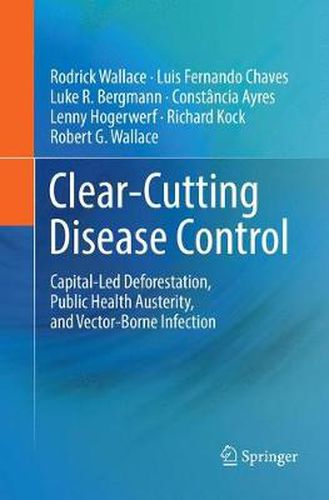Readings Newsletter
Become a Readings Member to make your shopping experience even easier.
Sign in or sign up for free!
You’re not far away from qualifying for FREE standard shipping within Australia
You’ve qualified for FREE standard shipping within Australia
The cart is loading…






This title is printed to order. This book may have been self-published. If so, we cannot guarantee the quality of the content. In the main most books will have gone through the editing process however some may not. We therefore suggest that you be aware of this before ordering this book. If in doubt check either the author or publisher’s details as we are unable to accept any returns unless they are faulty. Please contact us if you have any questions.
The vector-borne Zika virus joins avian influenza, Ebola, and yellow fever as recent public health crises threatening pandemicity.
By a combination of stochastic modeling and economic geography, this book proposes two key causes together explain the explosive spread of the worst of the vector-borne outbreaks.
Ecosystems in which such pathogens are largely controlled by environmental stochasticity are being drastically streamlined by both agribusiness-led deforestation and deficits in public health and environmental sanitation.
Consequently, a subset of infections that once burned out relatively quickly in local forests are now propagating across susceptible human populations whose vulnerability to infection is often exacerbated in structurally adjusted cities. The resulting outbreaks are characterized by greater global extent, duration, and momentum.
As infectious diseases in an age of nation states and global health programs cannot, as much of the present modeling literature presumes, be described by interacting populations of host, vector, and pathogen alone, a series of control theory models is also introduced here. These models, useful to researchers and health officials alike, explicitly address interactions between government ministries and the pathogens they aim to control.
$9.00 standard shipping within Australia
FREE standard shipping within Australia for orders over $100.00
Express & International shipping calculated at checkout
This title is printed to order. This book may have been self-published. If so, we cannot guarantee the quality of the content. In the main most books will have gone through the editing process however some may not. We therefore suggest that you be aware of this before ordering this book. If in doubt check either the author or publisher’s details as we are unable to accept any returns unless they are faulty. Please contact us if you have any questions.
The vector-borne Zika virus joins avian influenza, Ebola, and yellow fever as recent public health crises threatening pandemicity.
By a combination of stochastic modeling and economic geography, this book proposes two key causes together explain the explosive spread of the worst of the vector-borne outbreaks.
Ecosystems in which such pathogens are largely controlled by environmental stochasticity are being drastically streamlined by both agribusiness-led deforestation and deficits in public health and environmental sanitation.
Consequently, a subset of infections that once burned out relatively quickly in local forests are now propagating across susceptible human populations whose vulnerability to infection is often exacerbated in structurally adjusted cities. The resulting outbreaks are characterized by greater global extent, duration, and momentum.
As infectious diseases in an age of nation states and global health programs cannot, as much of the present modeling literature presumes, be described by interacting populations of host, vector, and pathogen alone, a series of control theory models is also introduced here. These models, useful to researchers and health officials alike, explicitly address interactions between government ministries and the pathogens they aim to control.